Free Delivery
On order over £99*

(Ambystoma mexicanum)
These animals are extremely fascinating and easy to care for. Pink with red eyes.

(Ambystoma mexicanum)
These animals are extremely fascinating and easy to care for.

(Ambystoma mexicanum)
These animals are extremely fascinating and easy to care for.

(Dendrobates leucomelas)
An active, bold dart frog with striking markings

(Adelphobates galactonotus)
Medium sized frog with a brightly coloured pattern "splashed" on its back.

(Pyxicephalus adspersus)
A Very large species of ground dwelling frog with great character

(Ceratophrys cranwelli)
Also know as a pacman frog. Easy to care for ground frog that grows quite large.

(Ceratophrys cranwelli)
This morph is paler than an albino, and the green colour develops as they mature.
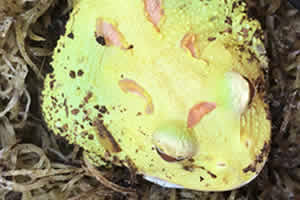
(Ceratophrys cranwelli)
Also know as a pacman frog. Easy to care for ground frog that grows quite large.

(Agalychnis callidryas)
CB24. One of the most well known tree frogs for their vivid red eye colour.

(Litoria caerulea)
CB24. A fun, chunky treefrog with a big appetite. A great starter frog

(Testudo hermanni)
CB21. Microchipped and licenced.

(Chamaeleo calyptratus)
CB24 Males. Colourful animals with lots of character.

(Chamaeleo calyptratus)
CB24 Females.Colourful animals with lots of character.

(Furcifer pardalis)
CB24 babies. Pairs only

(Pogona Vitticeps)
CB24 babies. Make great pets, very interactive.

(Pogona Vitticeps)
CB24 babies. Make great pets, very interactive.

(Correlophus ciliatus)
A great beginner species. Easy to care for and good to handle

(Rhacodactylus auriculatus)
CB24 Similar to crested gecko, with rougher skin and motled markings.
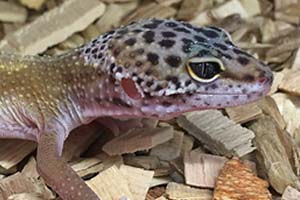
(Eublepharis macularius)
Various colour morph / types including Mac snow and Jungle

(Mniarogekko chahoua)
First time we have had this species available. CB22 babies.

(Lepidodactylus lugubris)
A low maintenance, small species of gecko that are parthenogenic.

(Gecko Gecko)
One of the largest gecko species. Beautiful markings but has attitude!

(Laemanctus longipes)
CB24. A gorgeous arboreal species with a tail that is almost 3 times the lentgh of its body

(Tribolonotus gracilis)
Rarely available CB. A shy species that is more of a look at pet than a hands on one

(Xenagama taylori)
A dwarf species of Agama rarely seen captive bred

(Varanus acanthurus)
CB24. A dwarf montior, great personality and easy to care for.

(Epicrates maurus)
CB24. The smallest of the rainbow boa species which becomes a rich chocolate brown colour with age.

(Gongylophis colubrinus)
CB21. A small species of burrowing boa.

(Pantherophis guttatus guttatus)
Adult. This morph lacks any black pigmentantion.

(Pantherophis guttatus guttatus)
A pattern morph with a distinctive stripe, red with no black colouration.
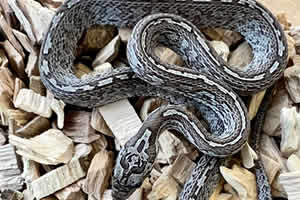
(Pantherophis guttatus guttatus)
Lacks red pigmentation, with the addition of Tessera markings

(Pantherophis guttatus guttatus)
CB21. Becomes redder as it matures, with the addition of Tessera markings.

(Pantherophis guttatus guttatus)
A mixture of yellow and caramal brown colours with a distinctive dot markings down its back

(Pantherophis guttatus guttatus)
CB22. An orange body with red blotches, outlined with black.

(Pantherophis guttatus guttatus)
CB23. An unusal colour morph thast is white with orange and black spots
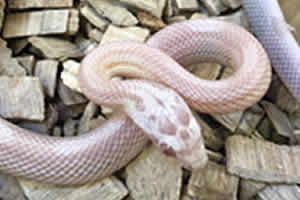
(Pantherophis guttatus guttatus)
CB22. A pretty corn snake with pink and white markings.

(Pantherophis guttatus guttatus)
A pattern morph with a distinctive stripe, pink and white with red eyes.
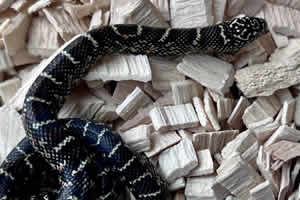
(Lampropeltis getula floridana)
CB22. Brown and tan banding, adult size 4-5ft.

( Lampropeltis calligaster)
CB22. Tan colouration with dark dorsal blotches. Adult size 2.5 -3.5ft.
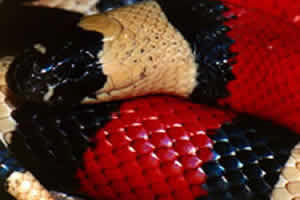
(Lampropeltis triangulum campbelli)
Well known for their tri colour striped pattern, intended to mimic those of the venomous coral snake

(Python brongersmai)
A stocky, short tailed python with attitude!

(Morelia bredli)
CB20 Male. Semi arboreal, and can grow reasonably large.
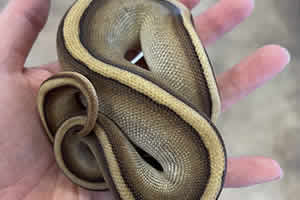
(Python regius)
CB21. Brown and tan in colour with a full body stripe.

(Python regius)
A great beginner snake. Original colour and markings.
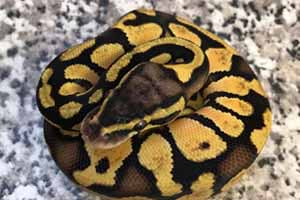
(Python regius)
CB22 Male. A cross between a fire and a pastel

(Python regius)
A great beginner snake.

(lamprophis capensis)
A smaller species that is easy to keep and handle, great for beginers
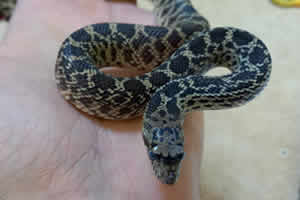
(Pituophis catenifer sayi)
One of the largest species of snake in North America, reaching up to 8ft in length.

(Thamnophis eques scotti)
CB22. Semi-aquatic and gets to about 1m average when fully grown.

(Idiothele mira)
3-4cm. A fascinating trapdoor species of tarantula

(Nhandu tripeii)
6-7cm. A large fluffy species with strawberry blonde hairs.

(Pamphobeteus sp."platyomma")
A beautiful sp[ecies with a pinkish overall colour and a starburst pattern on the carapace.

(Lasiodora striatipes)
4-5cm. A fast growing species, similar to a Salmon Pink but with more leg striping.

(Hysterocrates gigas)
Juvinille. An agressive species that is the only know species to swim.

(Holothele longipes)
S/A female. A dwarf species with amazing colouration.

(Megaphobema robustum)
6-7cm. A large, attractive species that grows sharps spines on its rear legs to fight off predators

(Psalmopoeus reduncus)
3-4cm. An arboreal species that is brown with an olive carapace.

(Phormictopus auratus)
5-6cm. A large species that is mahogany in colour with red hairs on the abdomen and a beautiful metallic gold carapace.

(Aphonopelma chalcodes)
Sling. A slow growing species that takes years to mature. Females can live over 25 years

(Ceratogyrus darlingi)
7-8cm. An amazing spider that grows a horn from its carapace

(Chrom. cyaneopubescens)
5-6cm. Beautiful colours and markings, can be skittish

(Thrigmopoeus truculentus)
4-6cm. A burrowing species that has the ability to stridulate when it feels threatened.

(Avicularia braunshauseni)
4cm. The largest species of Avicularia.

(Avicularia avicularia)
5-6cm. A medium sized arboreal species with pink tips on its legs

(Chilobrachys fimbriatus)
1cm. Very heavy webbers, can be very aggressive.

(Phormingochilus sp. "rufus")
1-2cm. A fast arboreal species with a tiger-striped pattern on their abdomen.

(Caribena versicolor)
1-2cm. A docile, arboreal spider with unique coloration

(Aphonopelma bicoloratum)
1cm. A slow growing, docile species with orange legs.

(Pterinochilus Miikumi murinus)
1-2cm. AKA Orange Bitety Thing. Fast and fiesty, just darker!
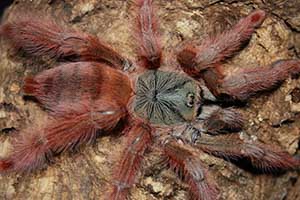
(Pseudoclamoris gigas)
1-2cm. An arboreal species with attitude that likes to web

(Avicularia juruensis)
Sling. Adults are a deep iridescent purple with pink toes.

(Caribena laeta)
1-2cm. A dolice tree dwelling species.

(Orphnaecus philippinus)
1cm. A slender burrowing species that is a gorgerous tangerine colour

(Avicularia juruensis)
5-7cm. Adults are a deep iridescent purple with pink toes

(Phormingochilus hatihati)
5-6cm. A heavy webber with blue legs and blue abdomen.
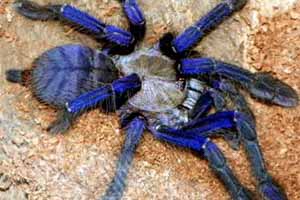
(Omothymus violaceopes)
2cm. A large arboreal species with intense blue colouration on the legs

(Monocentropus balfouri)
5-7cm. A beautiful species with blue legs that builds intricate webs

(Ceratogyrus marshalli)
5cm. Charecterized by having a "horn" protruding from the carapace..

(Aphonopelma seemani)
1cm. A terrestrial species with striking markings

(Aphonopelma anax)
Juvinille. A slow growing, easy to care for species.
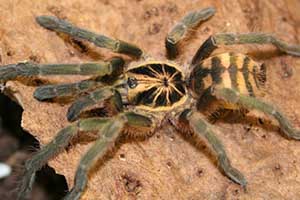
(Neoholothele incei)
4-5cm. An active terrestial species that builds heavy webs

(Psalmopoeus irminia)
1-2cm. Striking black coloration paired with vibrant orange chevrons and leg markings
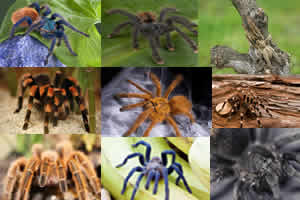
(Psalmopoeus langenbucheri)
Sling. A smaller species of Psalmopoeus, can be skittish.

(Avicularia bicegoi)
4cm. A large arboreal species covered in long white wooly hairs. Rarely seen in the trade.

(Nhandu chromatus)
5-6cm. A fast growning, large species

(Ceratogyrus meridionalis)
1cm. A burrowing species that is a mixture of grey, brown and gold in colour

(Iridopelma hirsutum)
1-2cm. A defensive arboreal species that needs high humidity.

(Neischnocolus sp. panama)
1cm. Only reaching 3" when fully grown with beautiful colouration.
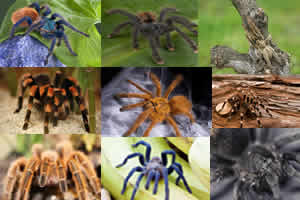
(Pseudohapalopus sp. "blue")
1cm. A docile dwarf species with a meatllic blue abdomen.

(Cyriocosmus leetzi)
0.5cm. A small docile species suitable for a begginer

(Cyriopagopoeus lividum)
7-8cm. A burrowing species, fast and agressive.

(Chilobrachys sp. "kaeng krachan")
1-2cm. A large, jet black burrowing species

(Hapalopus sp. "Guerilla")
1cm. This dwarf species is the largest of all Hapalopus genus, with strinking red and black markings.

(Lasiodora difficilis)
1-2cm. Similar to the salmon pinks but with more red colouration on the abdomen.

(Pterinochilus lugardi)
Sling. A defensize ground species, Tan in colouration

(Ybyrapora sooretama)
Sling. A beautiful new species of Pink Toe

(Heterothele gabonensis)
1cm. A heavy webbing species than can be kept communally

(Harpactira pulchripes)
1cm. A terrestrial species that likes to web. Defensive when provoked.

(Theraphosa apophysis)
7-8cm. Rarer than the other goliath species, but still a big tarantula!

(Theraphosa blondi)
3-4cm. The largest spider in the world by mass and size.

(Selenocosmia javanensis
1-2cm. An agressive fossorial species. Brown/black in colouration.

(Pelinobius muticus)
1cm. Juvenile. An impressive burrowing species, known to be agressive.

(Orphnaecus sp. "Panay Blue")
Sling. A dwarf burrowing species

(Avicularia minatrix)
1c. A dwarf arboreal species only growing to about 2.5"

(Peruphasma schultei)
A stunning insect that feeds on privet and honeysuckle

(Lissachatina fulica)
These make ideal pets as they are easy to look after and grow up to 8"
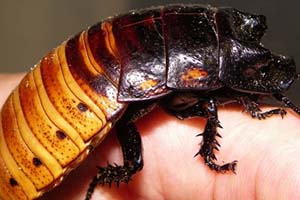
(Gromphadorhina portentosa)
Large cockroachs that hiss when they feel theartened
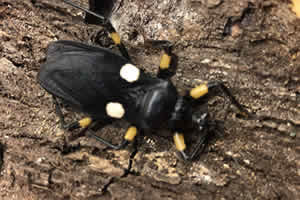
(Platymeris biguttatus)
Feirce predatory insect, with a needle like mouthpart to inject their prey.